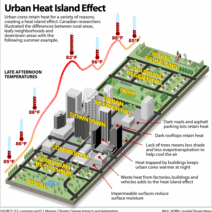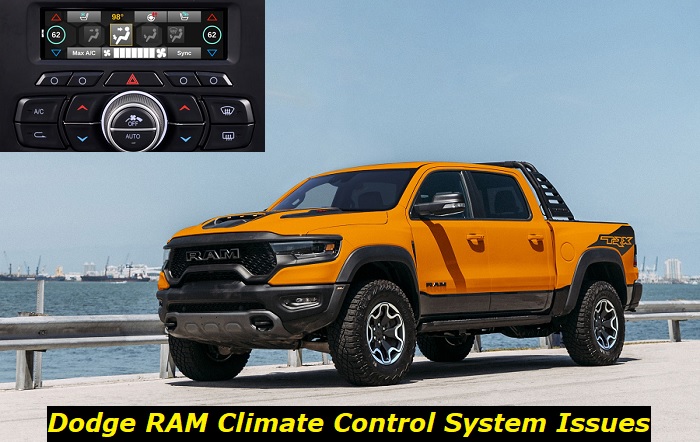When discussing the evolution of automotive technology, particularly in the realm of comfort and convenience features, one often encounters the topic of climate control systems. Among the various manufacturers, Dodge has carved out a notable reputation for implementing dual climate control in its pickup trucks. But the function not only serves the immediate purpose of comfort—it reflects broader trends in consumer expectations and the evolving automotive landscape.
The transition towards dual climate control systems in Dodge pickups is a great case study in consumer-focused design philosophy. Traditionally, single-zone climate control systems dominated, where only one temperature setting could be achieved for the entire cabin. With advancements and the growing appreciation for personalized experiences, automakers began to recognize that comfort—and by extension, dual climate control—represents a crucial aspect of vehicle ownership. So, what year did Dodge pickups start integrating this feature into their lineup?
Preparation for a Shift in Consumer Demand
As early as the late 1990s, Dodge began to anticipate market demands for enhanced comfort in vehicles, especially within the pickup segment. The Dodge Ram, one of the most iconic and robust full-size pickups, was evolving rapidly in terms of design and technology. The introduction of dual climate control in pickups wasn’t just an isolated decision; it reflects a broader recognition of changing consumer preferences regarding vehicle amenities. By offering dual climate control, Dodge positioned itself to better serve drivers and passengers who had varying comfort requirements—thus enhancing the overall driving experience.
Given that pickups are often used for work as well as recreation, the company realized that the convenience factor would not only attract more buyers but also cater to existing customers’ evolving needs. It’s not merely about increased sales figures. It’s about engendering loyalty through superior comfort and functionality. The awareness that drivers often travel with passengers—be it family, friends, or coworkers—reinforces the utility of dual climate control systems.
Pioneering Technology in the Early 2000s
In the early 2000s, Dodge made strides towards integrating advanced features into their ram trucks. The transition to include dual climate control systems gained momentum with the introduction of the 2002 Dodge Ram 1500 model. This marked a significant evolution not only in the specific model but also within the entire light truck segment. Dual-zone climate control allows the driver and front passenger to set individual temperature preferences. Such a feature became increasingly perceived as essential in family vehicles and those used for diverse lifestyles.
In addition to providing individual comfort, dual climate control systems also incorporate more sophisticated air circulation methods, enhancing air quality within the vehicle. This technological sophistication correlates with an increasing customer awareness about health and comfort while commuting. Such choices prompted automakers, including Dodge, to not just focus on performance, but include amenities for an improved-quality lifestyle on the go.
Wider Impacts of Dual-Climate Control Adoption
The adoption of dual climate control systems represents more than just a feature addition; it signifies a shift in consumers’ interactions with their vehicles. Vehicles nowadays are not only utilitarian assets but also representatives of personal taste and lifestyle priorities. The option for dual climate controls speaks to an understanding that consumers desire an environment that reflects their individual preferences. The automotive industry’s recognition of these broader lifestyle choices is noteworthy.
Moreover, with climate change considerations at the forefront of public consciousness, the conversation around vehicle emissions and energy efficiency has become increasingly important. Dual climate control systems can also play a role in this dialogue by optimizing energy use within the vehicle. By allowing for user-specific climate settings rather than a singular temperature setting, less energy may be expended in heating or cooling the cabin, effectively contributing to reduced fuel consumption. Such intricacies highlight the complexity of automotive design and technology in the age of ecological awareness.
Continuing Innovation and Consumer Expectations
As the automotive industry continues to innovate, the features that once seemed like luxuries are progressively becoming standard expectations. The story of dual climate control in Dodge pickups illustrates the progressive trajectory of vehicle technology. While the 2002 model year marked a significant point for Dodge, it also laid the groundwork for further developments in climate control technologies across all their models.
Contemporary consumer demands have also introduced a new layer to the conversation. Today’s drivers are in search of vehicles that not only offer superior performance and reliability but also an enhanced overall experience. The options for heated seats, smart climate control, and even seat ventilation are now prevalent in newer models. This aligns itself with the broader automotive narrative focusing on creating a more holistic relationship between the driver and the vehicle.
Implications for the Future
Looking toward the future, the implications of how Dodge and other manufacturers continue to evolve features like dual climate control hold considerable weight for both the market and the environment. With an increasing focus on sustainability, one can anticipate the further refinement of climate control systems not merely as a comfort feature, but as part of a broader strategy integrated into eco-friendly practices. The incorporation of advanced sensors, the potential for automated temperature adjustments based on external and internal conditions, and other smart features represent promising avenues for exploration.
Thus, the evolution of dual climate control in Dodge pickups serves not just as a chapter in automotive history, but as a lens through which we can view the changing landscape of consumer priorities, technological advancements, and environmental consciousness. This narrative circumvents mere speculation; it showcases a transformative journey toward a more personalized and responsible driving experience.







